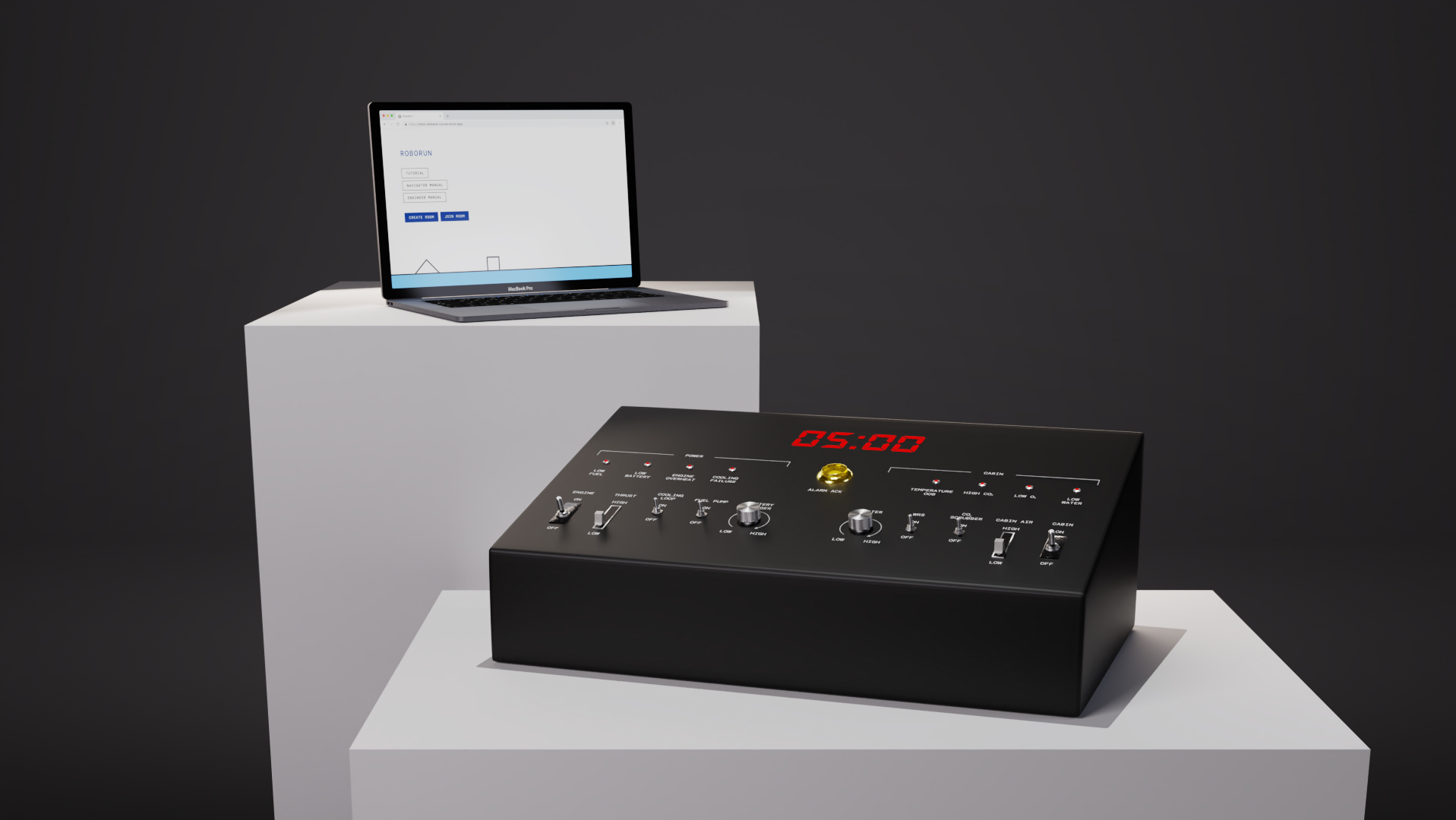
Background
Tasks are integral to the entire research testing process from proposal to data analysis. Historically, these tasks primarily focused on procedural training for astronauts. However, with NASA's goal of going to Mars, there are new sets of challenges.
First, Mission Control is no longer able to provide immediate support due to communication delay. With up to 40-minutes of communication delay, all the responsibilities will be put on the astronauts. Time-critical anomalies are expected to occur on average five times over the course of the Mars mission; therefore, new tasks are needed to enable researchers to assess the impact of their research in the presence of an anomaly.
Approach
The main challenge was creating something from nothing. There were no tasks to reference and no guidelines to follow. To tackle this, we developed our own guidelines to build tasks based on anomaly criteria and research. This ensured that our tasks are reflective of an anomaly, giving researchers a starting point for anomaly response research.
These tasks require creative and systematic thinking to solve, have cascading problems, incorporates multiple stressors, needs information prioritization, and teamwork to fully reflect a time-critical anomaly.
Tasks: Robo Run
Robo Run is a digital task where players have to navigate a robot through an obstacle course to reach the end goal, but they must also perform maintenance by fixing or replacing faculty components.
Robo Run demo, implemented by Vicky Sun
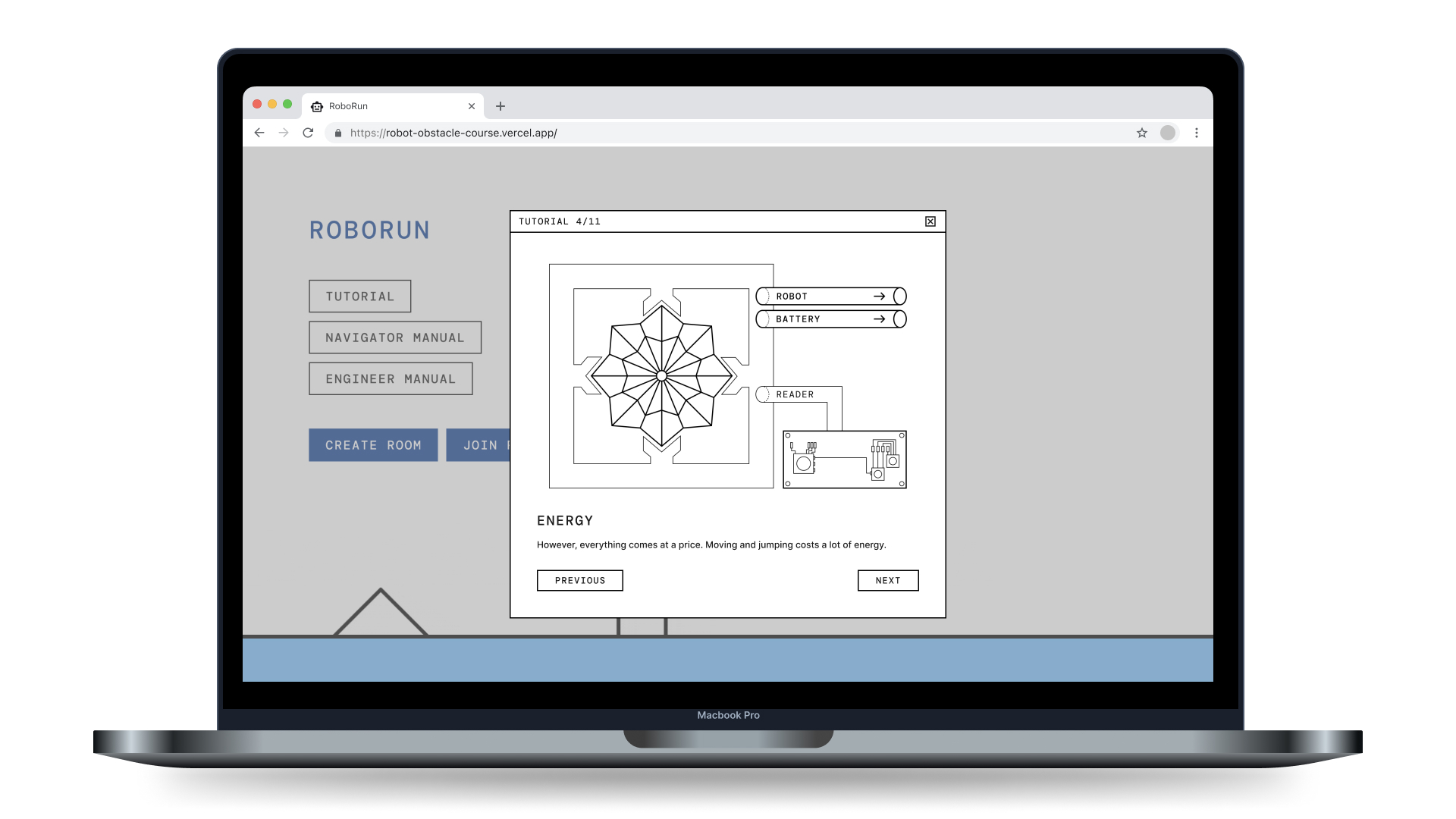
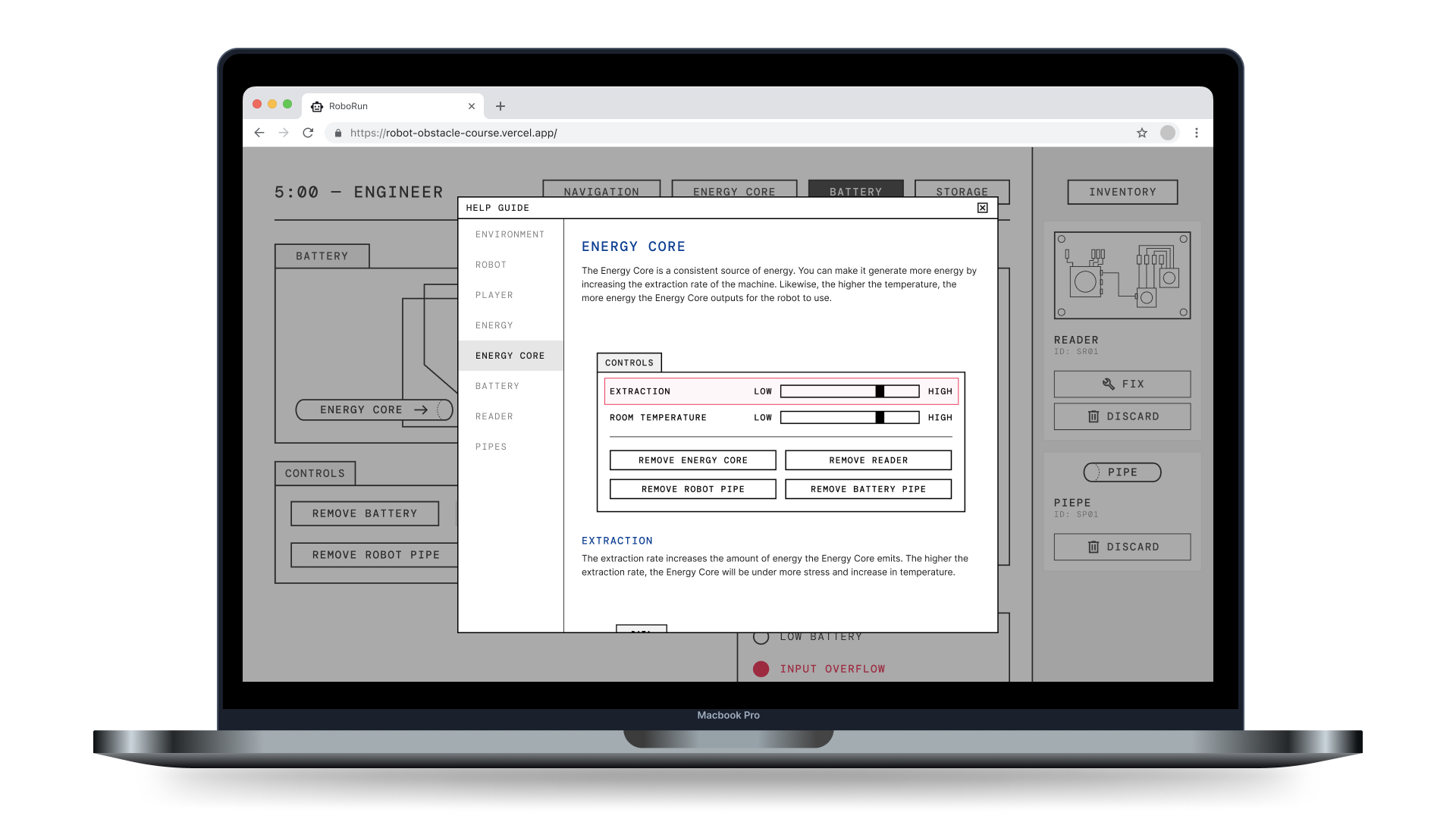
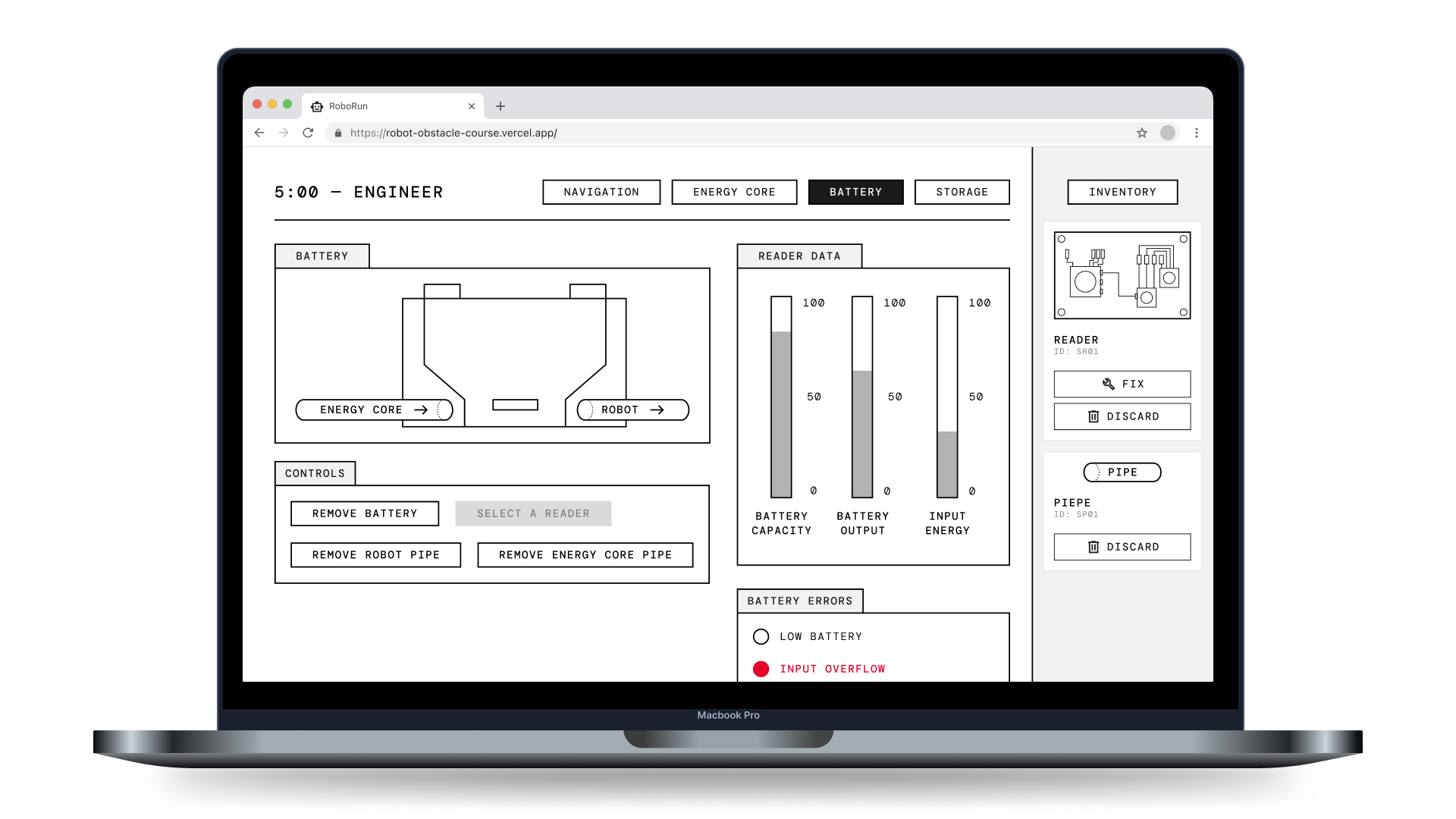

Tasks: Space Race
Space Race is a physical task where the goal is to travel as far as possible in a spaceship while maintaining critical systems to prevent system failure.
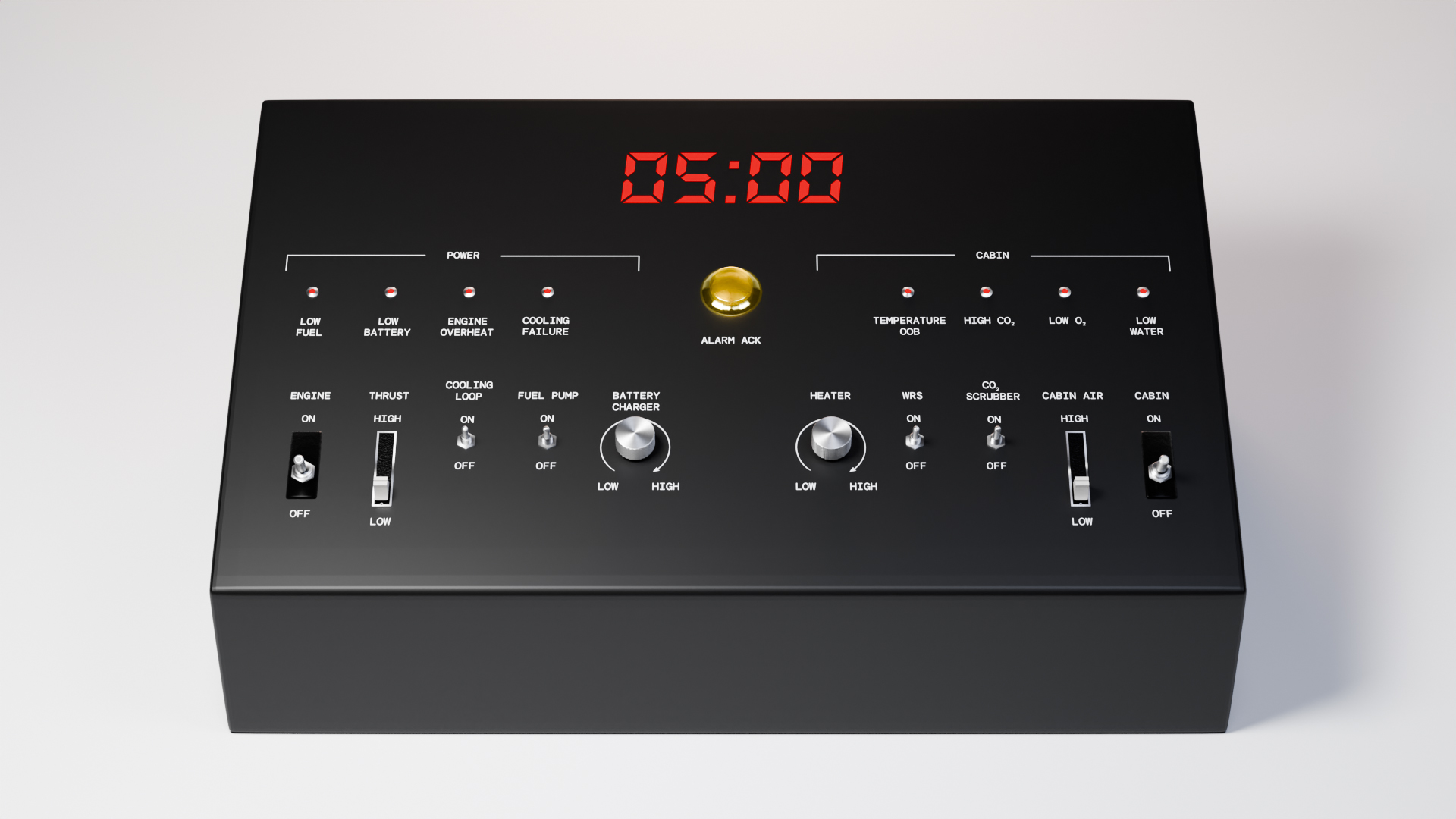
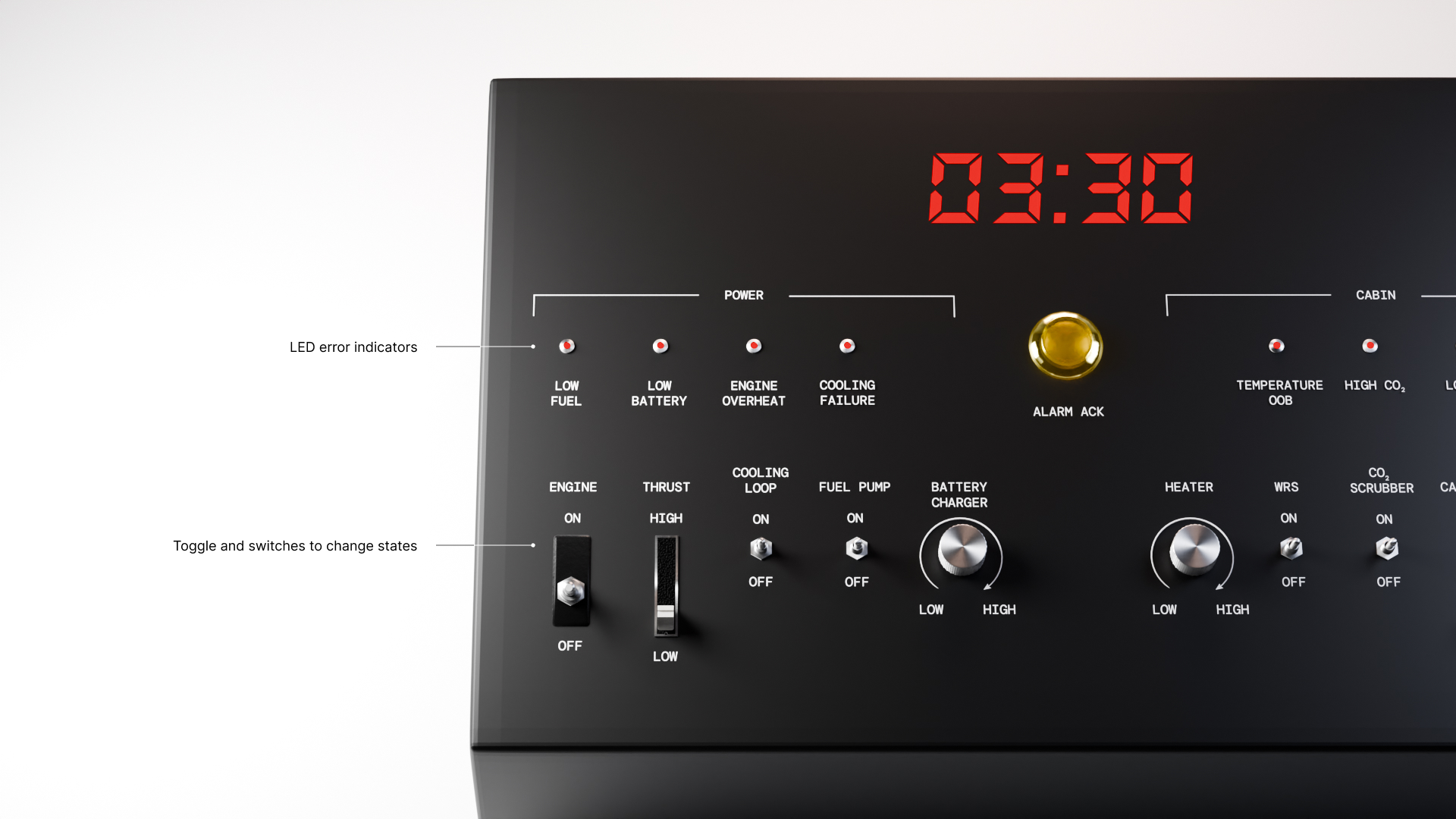
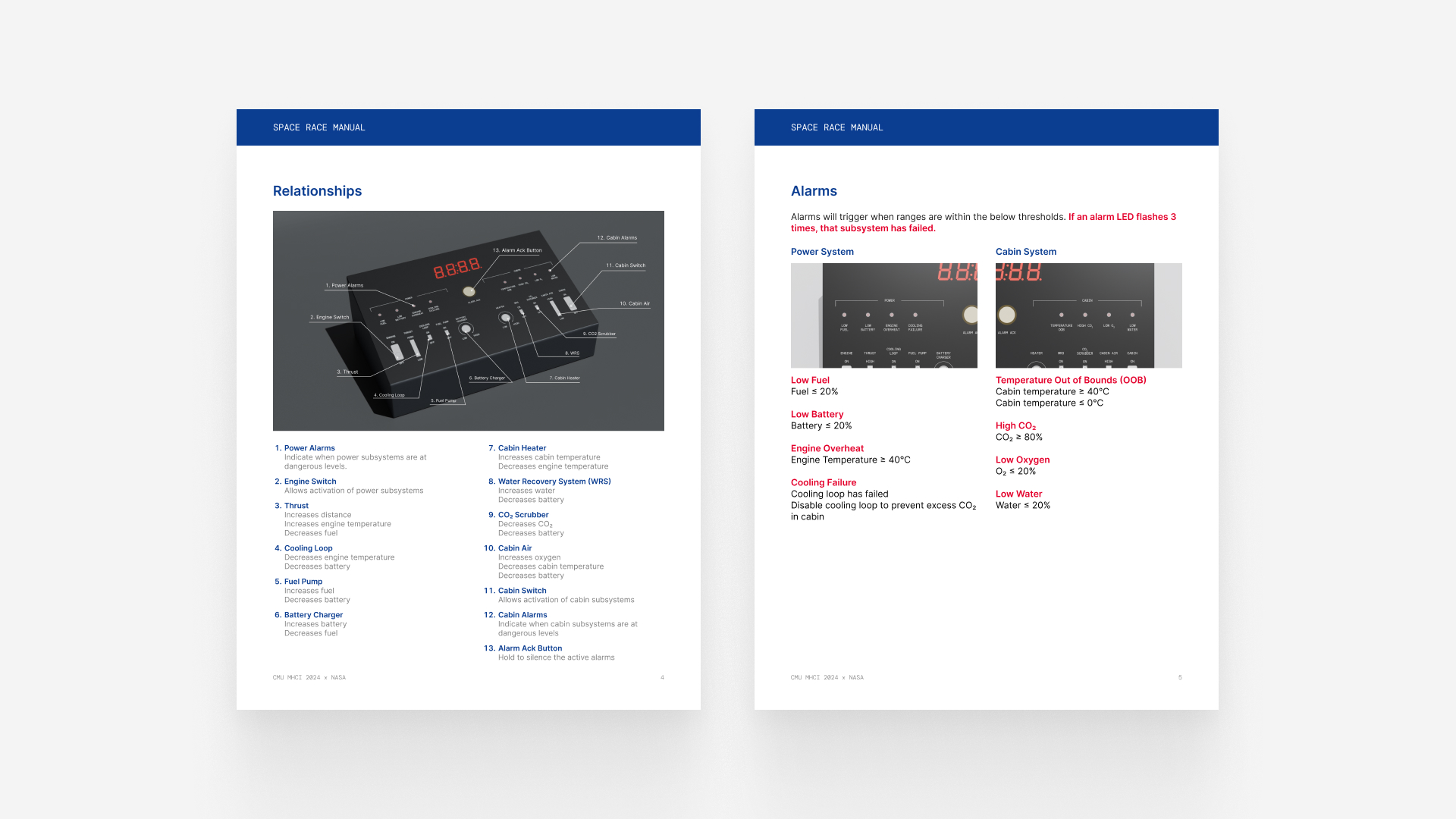
M.A.S.T.
The guidelines are apart of a manual called M.A.S.T., which we handed off to NASA researchers to develop tasks that are reflective of anomaly situations.
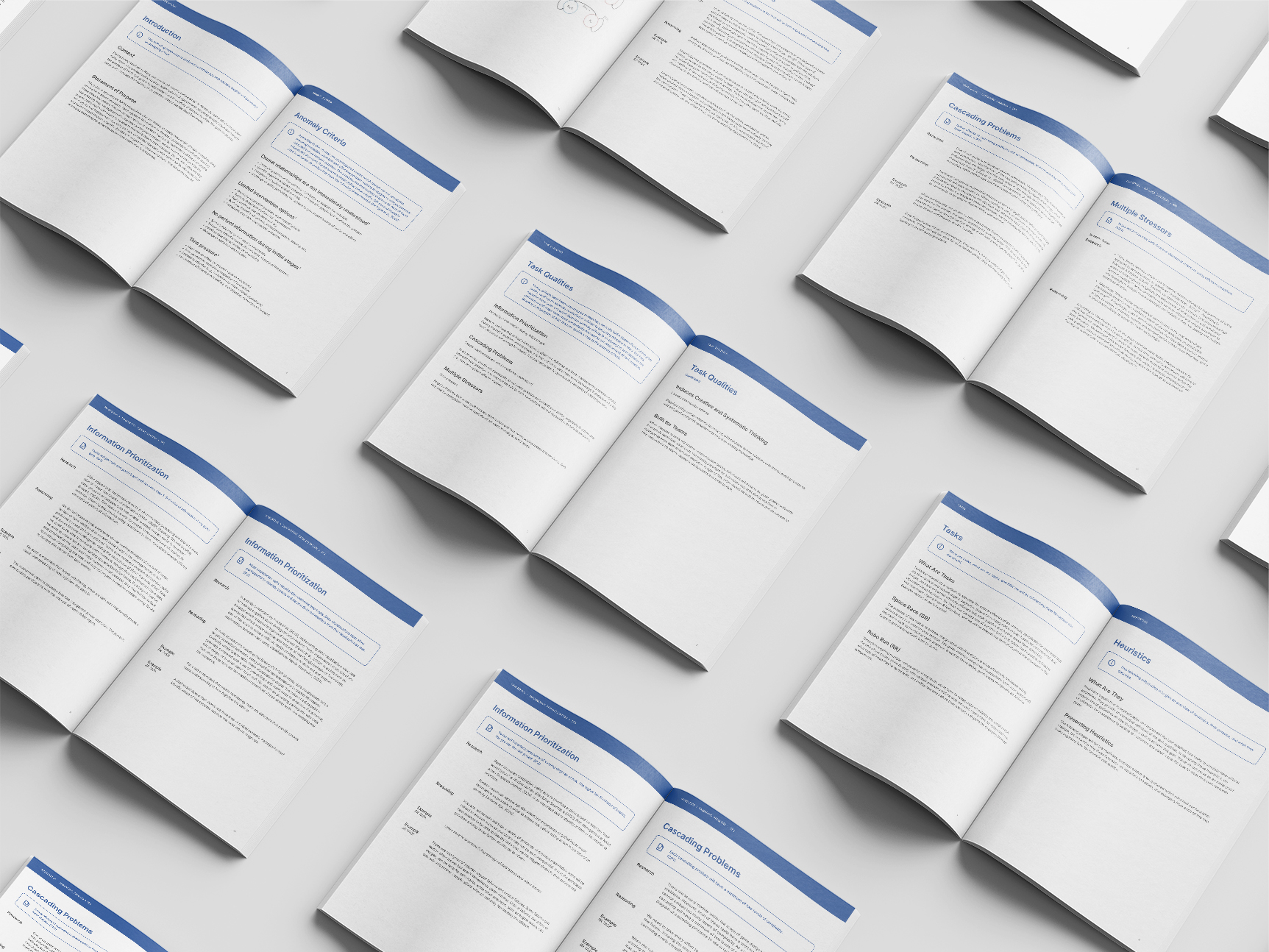
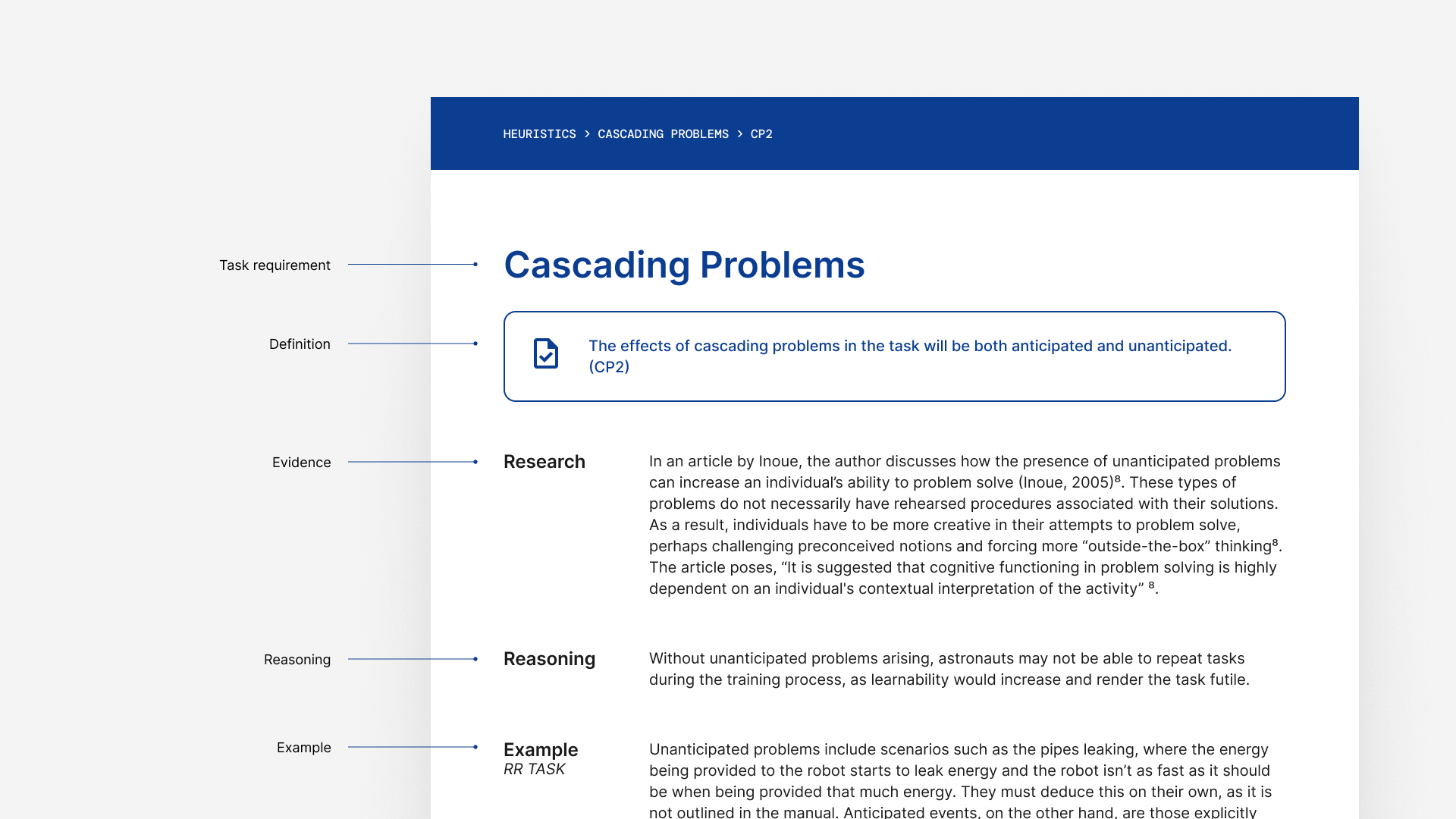
Impact
Immediately after the presentation, we were asked by people at Johnson Space Center in Houston, "how can we get our hands on these tasks?" and "how much does it cost to reproduce?".
Even researchers from separate departments such as aeronautics were interested in remixing the tasks to fit their specific criteria. "I'm very interested in false alarms and the degree to which those kinds of things cause you to lose focus..." and how can these features in the tasks transfer to problems they're trying to solve in aeronautics.
Productivity
+25%
Task Inventory